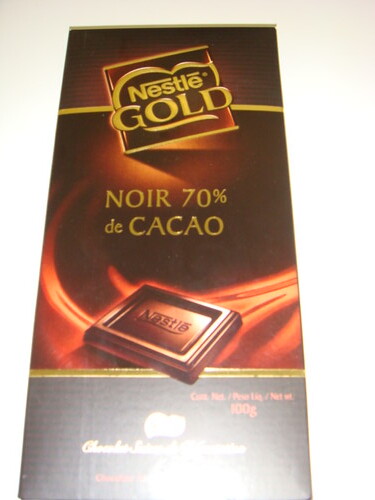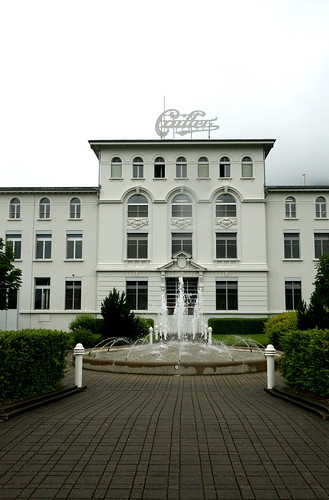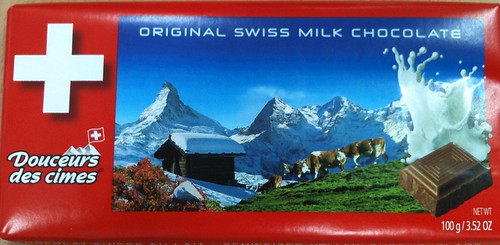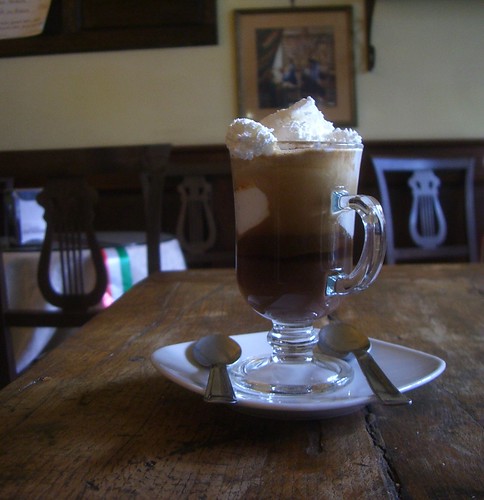Chocolate: Tastes and flavors in different parts of the world
The gift from Quetzalcoatl, Moctezuma went around the world, where each country is transformed according to their customs and enriched with new knowledge and recipes. Today the chocolate gourmand invites a tour of some places that put you in the heart of its tourist attractions and restaurants.

Photography by Claudia_midori
Mexican proverb says that «life without chocolate is no life.» Well I know the heirs of Moctezuma, the recipient of the divine gift is now consumed throughout the world and many different forms: liquid and cup, as tradition dictates, but also sticks, milk, nuts. .. and even gold. Throughout the centuries, chocolate was the most remote places in the world, regardless of changes in climate or latitude was adopted with relish and innovative imagination. So today you can visit some factories and chocolatiers whose products are emblematic of the most diverse but all are born of the same colored pods of cacao.
Bariloche branches:
In our country we are so used to seeing «whole life» seems no longer a rarity, but newcomers always struck by the traditional raw chocolate in Bariloche. Milk or white, shriveled canes as real tree branches are one of the most popular city, thanks to the Swiss Central European influence, became Argentina’s capital of chocolate. Tradition has it that, like other popular inventions, was born by chance, when he dropped Fenoglio Aldo chocolate on the table by accident and to tarnish least not up but left it to dry and then scraped with a spatula. Already become a tradition, the process can be seen in the windows of Bariloche, and also in some of Buenos Aires, where the master chocolatiers branches accumulate expertise. In the city of Rio Negro, in addition to the many and tempting chocolate manufacturers from the center, visit the Chocolate Museum on Avenida Bustillo, showing step by step method of preparation.
Choco Brazil:
Vitoria, the capital of the Brazilian state of Espirito Santo (north of Rio de Janeiro) is built on an island off the mainland, together with the municipality of Vila Velha mainland across the bridge Terceira. The city is interesting as starting point for knowing the Pedra Azul State Park, the people of Domingos Martins and Venda Nova do immigrants and the historical-religious circuit of the center. But here arises because, among the low houses of Vila Velha, a factory whose products are well known to the Argentine palate: the Garoto chocolates, founded in 1929 by German immigrant Heinrich Meyerfreund. Guided tours (in hours upon request) by the factory during the tour can take some photos with giant puppets of some characters of Garoto. Finally, you can buy in the business some of its most traditional and others who do not always reach export boxes, sticks like the delicious chocolate-flavored dulce de leche and special baskets for the holiday season.
Swiss Delight:
Experts say that dark chocolate is the purest and most beneficial, the connoisseurs who appreciate authentic. But all over the world are legion who thank Henri Nestlé’s invention of milk chocolate, a very exquisite pleasure of Switzerland. This invention, along with chocolate-hazelnut and the machine to mix cocoa and sugar, made the Alpine nation one of the finest producers in the world.

Photography by CoreForce
In Broc, near Freiburg, can visit the Cailler factory, the oldest brand in Switzerland, which has about two centuries of history. The property stands next to a museum on the site he chose the founder’s grandson, Alexandre-Louis Cailler, to be near farms producing fresh milk. Step by step, you can find here all the history of the industrialization of chocolate, and of course ends with a tasting is a real magnet for fans of the fruit of the gods. Also in Vevey you can meet a famous chocolate: it is Poyet, specialist chocolates, sweets … and in the shoes of Charlie Chaplin, a famous resident of the city. And who wants to take a step further, can be initiated into the secrets and techniques of chocolate in the house Durig of Lausanne, which only works with products of high content of cacao and allows for a workshop to take home a chocolate made with their own hands. To make matters worse, Switzerland has taken from May to October the Chocolate Train, with its Belle Epoque coaches of the route runs from Montreux to Gruyères and Broc.

Photography by Bitman
Cocoa Marie Antoinette:
In the heart of Paris Rive Gauche, a local precious majestic logo, proudly displays the emblem of Chocolats-Debauve et Gallais. The showcase is a series of temptations chocolate candy made from pure cocoa, filled with tempting ganaches but attract the attention of the sight and taste. The noble air is explicitly visible on a plate on the front that reads, next to a lily, Established in 1800. Debauve et Gallais. Official Suppliers of the ancient kings of France. It all started with a pharmacist of Louis XVI, Sulpice Debauve, who invented chocolate medallions called guns (coins) at the request of Marie Antoinette, to overcome the displeasure of the queen at the time of taking medicines of dubious taste. Years later, when the guillotine had already wreaked havoc among the aristocracy, Debauve joined his nephew Jean-Baptiste Gallais and opened his first chocolate factory, soon famous in Germany, England, Italy and Switzerland. Still in family hands Poussin, heiress of the founders, Debauve et Gallais homemade guns Marie Antoinette, one of the icons of glass, cocoa from Colombia, Venezuela, Guatemala, Costa Rica and islands Caribbean.

Photography by Anu & Anant
Chocolate Kisses:
A famous painting by Francesco Hayez depicting a couple kissing inspired equally famous Baci chocolates box of Perugina. That is, kisses, chocolate hazelnut hearted, always accompanied by satin slips with phrases ranging from the romantic and kitsch. Three years ago, to celebrate the centenary of the brand, was founded Perugina Chocolate House, which includes a chocolate museum which tells the story of the product and the company, a chocolate factory which allowed to attend the production of famous chocolates and a chocolate school, where every visitor can make their «smear» custom and learn to make other delicious sweets with Perugina raw material. The entire complex is in the district of San Sisto Perugia in central Italy.
Still in Italy, Turin is also considered as the Chocolate City. A tradition was born in 1560, Emanuele Filiberto of Savoy was served symbolically to the city a steaming cup of chocolate to celebrate the establishment of the ducal capital. Over time Bicerin born, a hot drink made with coffee, cocoa and cream, and in the nineteenth century invented a system that mixed cocoa, vanilla, water and sugar to convert solid chocolate tablets. Turin’s flagship product is now the gianduiotto, linking cocoa with hazelnuts from the Langhe region, wrapped in gold paper tempting. The city and its surroundings are the major center of Italian chocolate making, with an annual production of 85,000 tonnes (40 per cent of the national total), held together by large industries and small artisan houses. Every year a carnival is made of chocolate, with festivals, tastings and events, called Cioccolato, and may also sample the best local productions in the history thanks to ChocoPass, which allows 22 tastings in three days.
Bon voyage!
Leave a Reply
You must be logged in to post a comment.
Recent Comments